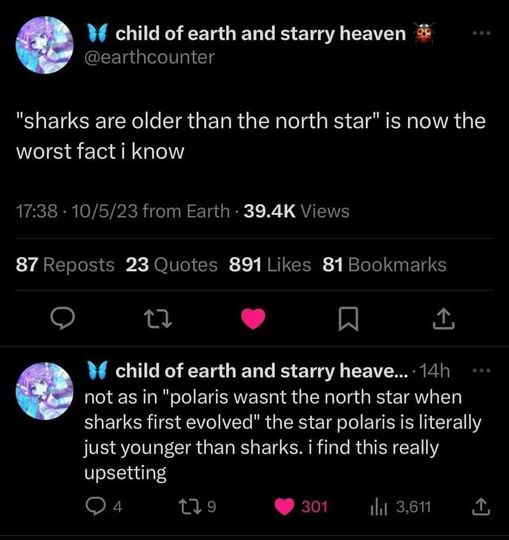this post was submitted on 07 Oct 2024
816 points (99.0% liked)
Science Memes
12250 readers
3057 users here now
Welcome to c/science_memes @ Mander.xyz!
A place for majestic STEMLORD peacocking, as well as memes about the realities of working in a lab.

Rules
- Don't throw mud. Behave like an intellectual and remember the human.
- Keep it rooted (on topic).
- No spam.
- Infographics welcome, get schooled.
This is a science community. We use the Dawkins definition of meme.
Research Committee
Other Mander Communities
Science and Research
Biology and Life Sciences
- [email protected]
- [email protected]
- [email protected]
- [email protected]
- [email protected]
- [email protected]
- [email protected]
- [email protected]
- [email protected]
- [email protected]
- [email protected]
- [email protected]
- [email protected]
- [email protected]
- [email protected]
- [email protected]
- [email protected]
- [email protected]
- [email protected]
- [email protected]
- [email protected]
- [email protected]
- [email protected]
- [email protected]
- !reptiles and [email protected]
Physical Sciences
- [email protected]
- [email protected]
- [email protected]
- [email protected]
- [email protected]
- [email protected]
- [email protected]
- [email protected]
- [email protected]
Humanities and Social Sciences
Practical and Applied Sciences
- !exercise-and [email protected]
- [email protected]
- !self [email protected]
- [email protected]
- [email protected]
- [email protected]
Memes
Miscellaneous
founded 2 years ago
MODERATORS
you are viewing a single comment's thread
view the rest of the comments
view the rest of the comments

This is only sort of true, unfortunately. Polaris is a two-star system: Polaris Aa and Polaris B.
Polaris B is much older than sharks, by several billion years.
Polaris Aa appears to be younger than sharks, at a measley 50 million years old, compared to sharks' 420 million years
HOWEVER it is unclear whether Polaris Aa is actually that young. Scientists believe that, based on some contradictory findings, that measurement may be inaccurate if Polaris Aa is formed from two different stars that merged. In that scenario, the model we use to calculate star age would no longer work and could give wildly inaccurate estimates of the star's true age
TMYK
Right but how did it know to be the pole star?? Huh?
Yeah! Makes ya think!
It had the fastest lap in qualifying.
Max Verstappen approves of this comment.
In my opinion Polaris B and Polaris Ab (it's actually a three star system!) don't count as 'The North Star' because they contribute almost nothing to the visible light seen without a telescope. Without Aa there's just no north pole star at the moment.
But that's interesting about the age being uncertain. I'd use the age of the merger as the age of the star anyway unless it didn't add much mass (but in that case it would have been a short lived giant anyway...) which would still likely put it under the 420 million years mark.
Fair enough on the first point!
The interesting scenario re: Polaris A's age would be if a larger, younger original star merged with a smaller, much older star. You'd have a small amount of late-stage byproducts in an otherwise relatively early-stage star. That would definitely make any age models 'confused' heh
I could imagine a scenario where the math works out such that the star appears a lot younger than it is despite being the product of a merger of two older stars, based on the masses and ages of the contributing objects and the amount of different material contributed by each